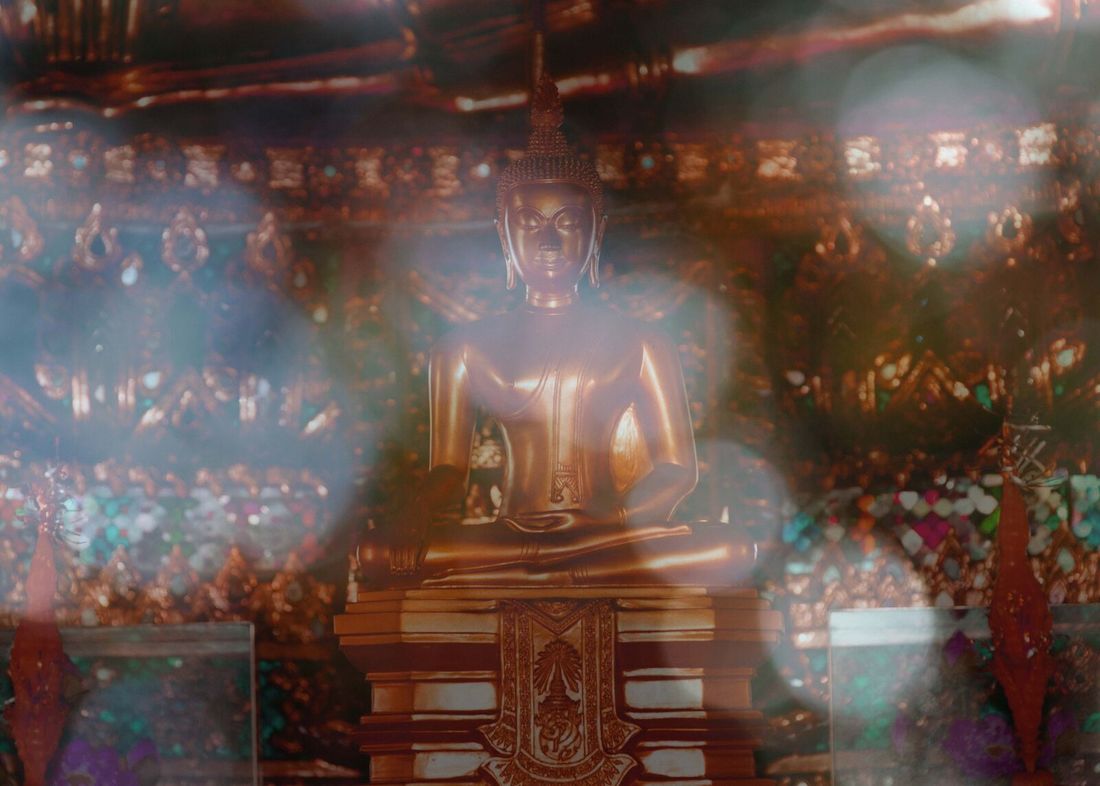|
The Breadcrumbs widget will appear here on the published site.
A Brief History on the Lamashtu Plaque of Al-Habja*Editor's Note: This story was originally published online on The Eunoia Review The Al-Habja Plaque of Lamashtu has been an interest coveted by archaeologists and enthusiasts of Mesopotamian mythology alike. Several items of this type have been constructed and reproduced over the many millennia since they were created. The most famous example of such artifacts exists in the Louvre Museum, one of the few fully complete examples of such a plaque. Pieces of others have been found, but very few have been preserved well enough, let alone kept intact. This was so until a year or so ago, when a nearly complete specimen managed to come under the care of Dr. Adam Kessler, Professor of Ancient History and Semitic Studies at Columbia University.
The history of Kessler’s plaque of Lamashtu has been difficult to determine entirely. Only a fraction (though a great fraction) of the piece managed to escape the war-torn former Iraq. Some seventy-nine percent of the original artifact is said to be intact today. Under Dr. Kessler’s study, major breakthroughs have been made about the artifact’s age and the relevance this has for studies of ancient history and possibly the development of civilization. Several tests have been conducted on the artifact with dates ranging much older than any other currently known artifact of its kind. Dates of Kessler’s artifact range from five to eight thousand B.C.E.1 The previously oldest known plaque was dated a little over three thousand years B.C.E. A great academic flurry has since developed over Kessler’s findings, and in spite of several personal tragedies, the artifact is set to be preserved and put on display at the Smithsonian in the coming months. Lamashtu is a fearsome deity in ancient Mesopotamian religion. She is considered one of the most evil figures in the ancient tradition, a monstrous demon that enjoys preying on the weak. It is said that Lamashtu liked to target new and unborn children, as well as their mothers. Lamashtu enjoyed drinking infants’ blood and gnawing on their bones, as well as spreading plagues to pregnant and nursing mothers. Lamashtu also loved to eat young men. She is a horrifying figure; the head of a lioness, body of a human, with the feet of a bird. She is often shown holding snakes, with pigs and dogs being nursed by her. She has a hairy body, the teeth of a donkey, and one of the worst attitudes of all the Mesopotamian deities. She was greatly feared due to the fact (according to myth) that she could act with malevolence on her own accord, without permission from the other gods. Her only known rival in the pantheon capable of combating her was the god Pazuzu (an equally malevolent entity in myth). Pazuzu (though responsible for locusts and famine) was also the most effective power to ward off the presence of Lamashtu. Often pregnant mothers would wear charms dedicated to Pazuzu and perform rituals in devotion to him in order to ensure Lamashtu did not attack the new or unborn child.2 This is all according to Mesopotamian mythology, of course, and no serious scholar today would argue such facts as literal truths. Before Dr. Kessler was able to gain control over the plaque of Al-Habja, it had the potential to be lost from history. It was known that said item had been uncovered near the town of Al-Habja (hence its name) in southern Iraq. Ironically enough, it was under Saddam Hussein’s rule that the artifact was first discovered. The artifact was first uncovered by soldiers of Hussein’s Republican Guard in 1991, while draining the Euphrates marshes in their campaign against the rebellious Marsh Arabs. The plaque was a source of fear for Iraqi soldiers, who supposedly covered it with a tarp, for fear the idol would give them nightmares and bring evil spirits upon them and their loved ones.3 From its discovery until about a year ago, the Al-Habja plaque rested quietly in a museum in the city of Mosul (former Iraq). The significance of this is not small. Mosul and the northern areas of the former state of Iraq were where the now-infamous Islamic State (IS) extended most of their control. Civil war still rages there today. During the height of IS’s control, one of their policies was the destruction of all idols and depictions they deemed non-Islamic. This mainly included ancient Mesopotamian artifacts. In Mosul alone, many dozens of priceless artifacts that were thousands of years old were completely destroyed or sold off by IS militants. Objects older than Christ or Mohammed were either smashed with sledge hammers or made into someone’s private furniture piece. While many priceless pieces of history were destroyed for being “pagan” idols, the Lamashtu Plaque of Al-Habja managed to mostly survive. The artifact shows signs of recent trauma, perhaps indicating that militants might have tried to destroy it. Yet this is not certain, though there is a rather bizarre circumstance that surrounds the extradition of the artifact. While militants were destroying other artifacts, the plaque managed to escape through a Kurdish courier, who claimed a fantastic story. This courier claimed that he retrieved the plaque from an IS base camp outside Mosul, as well as many other priceless artifacts that the militants had planned on selling on the black market to raise finances for their “Islamic State.” Here’s where the story gets strange; the entire base camp of militants was found dead, ripped apart and their body parts lying about. However, he claims that this was not the work of an airstrike or ground combat. The entire camp was functioning and intact, only all of the militants were mutilated without explanation. This Kurdish courier managed to smuggle the idol out of the war-torn chaos, as well as his fantastic story, and bring them to the attention of Dr. Kessler. The Smithsonian plans to unveil the artifact and its new exhibit located in the National Museum of Natural History, located in D.C. The goal is to open the exhibit in the next eight to nine months. The exhibit’s opening has been delayed twice so far. Several safety hazards have occurred at the exhibit, including the death of two janitors and a night watchman. As well as safety precautions, Dr. Adam Kessler, the caretaker of the Lamashtu Plaque, has recently taken an unannounced hiatus and is not responding to any attempted contact. Very little information is known about his present whereabouts, which has drawn concern from his colleagues who claimed his mental and physical health had been deteriorating.4 An alert system has been set up in an effort to find Dr. Kessler, to ensure his safety and sanity is secure. Due to these events, many internet sources have been speculating about supernatural forces at work. Occult and pagan fanatics claim a certain “curse” associated with the Al-Habja plaque. There have even now been reports of vandalism, including the use of cult imagery, against museum property. Police surveillance has been increased as a result of these issues. Regardless of the negative press developing around the artifact, the Smithsonian has assured that the exhibit will be set up in a timely manner. As one Professor Jackson Mayer (Yale) put it: “No one dies from a ghost story.” – R.M. Taylor, PhD 1The Guardian, “Groundbreaking New Age of Mesopotamian Slab Astounds Archaeology.” Taylor, R.M. (2014) 2Domhauer, Patrick & Taylor, R.M. “Demons of Ancient Babylon: A History of Mesopotamian Gods and Monsters.” Prometheus Press (New York, 2001) pp. 198-200 3The New York Times, “Dictator’s Discoveries: Ancient Artifacts Unearthed in southern marshes of Iraq.” Taylor, R.M. (1994) 4D.C. Tribune, “Columbia Professor Missing before Grand Opening of New Exhibit.” Griswold, Calvin (2014) CommentsComments are closed.
|








